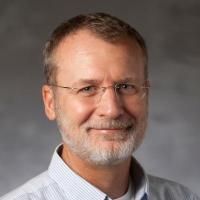Physical and economic potential of geological CO2 storage in saline aquifers.
Date
2009-03-15
Journal Title
Journal ISSN
Volume Title
Repository Usage Stats
views
downloads
Abstract
Carbon sequestration in sandstone saline reservoirs holds great potential for mitigating climate change, but its storage potential and cost per ton of avoided CO2 emissions are uncertain. We develop a general model to determine the maximum theoretical constraints on both storage potential and injection rate and use it to characterize the economic viability of geosequestration in sandstone saline aquifers. When applied to a representative set of aquifer characteristics, the model yields results that compare favorably with pilot projects currently underway. Over a range of reservoir properties, maximum effective storage peaks at an optimal depth of 1600 m, at which point 0.18-0.31 metric tons can be stored per cubic meter of bulk volume of reservoir. Maximum modeled injection rates predict minima for storage costs in a typical basin in the range of $2-7/ ton CO2 (2005 U.S.$) depending on depth and basin characteristics in our base-case scenario. Because the properties of natural reservoirs in the United States vary substantially, storage costs could in some cases be lower or higher by orders of magnitude. We conclude that available geosequestration capacity exhibits a wide range of technological and economic attractiveness. Like traditional projects in the extractive industries, geosequestration capacity should be exploited starting with the low-cost storage options first then moving gradually up the supply curve.
Type
Department
Description
Provenance
Subjects
Citation
Permalink
Collections
Scholars@Duke

Lincoln F. Pratson
Lincoln Pratson is a professor in the Nicholas School of the Environment's Division of Earth & Ocean Sciences. He has been Chair of EOS, Director of the Duke University Energy Hub, Associate Director of the Gendell Center for Engineering, Energy & the Environment at Duke, served on the Executive Committee for the Research Triangle Energy Consortium (https://www.rtec-rtp.org/), and was a co-founder & co-director of the Sustainable Energy Fellowship (http://www.teachenergy.org/). Pratson is a geologist/geophysicist by training. He has consulted for major oil companies and helped co-found an energy service company that provides state-of-the-art gravity data used to explore for offshore oil and gas reserves. Pratson co-leads a research group at Duke on energy systems. The research has been supported by the DOE, DoD and private industry. Working with students, Pratson is conducting research into carbon capture and storage, integrating different forms of energy storage and renewable energy generation into the electricity industry operations, assessing current and future water use in thermo-electric power generation, and evaluating future demand for and supplies of energy resources.
Unless otherwise indicated, scholarly articles published by Duke faculty members are made available here with a CC-BY-NC (Creative Commons Attribution Non-Commercial) license, as enabled by the Duke Open Access Policy. If you wish to use the materials in ways not already permitted under CC-BY-NC, please consult the copyright owner. Other materials are made available here through the author’s grant of a non-exclusive license to make their work openly accessible.
